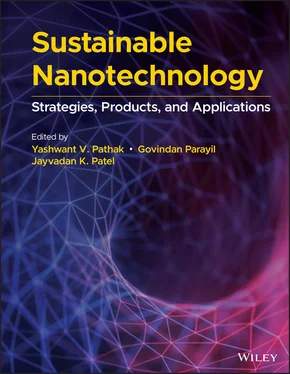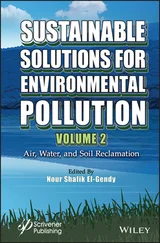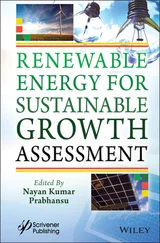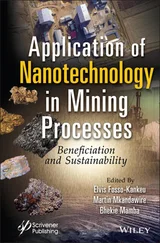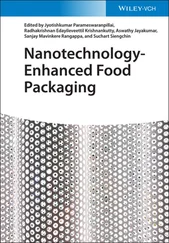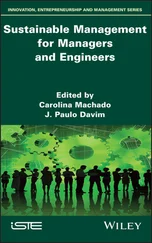Sustainable Nanotechnology
Здесь есть возможность читать онлайн «Sustainable Nanotechnology» — ознакомительный отрывок электронной книги совершенно бесплатно, а после прочтения отрывка купить полную версию. В некоторых случаях можно слушать аудио, скачать через торрент в формате fb2 и присутствует краткое содержание. Жанр: unrecognised, на английском языке. Описание произведения, (предисловие) а так же отзывы посетителей доступны на портале библиотеки ЛибКат.
- Название:Sustainable Nanotechnology
- Автор:
- Жанр:
- Год:неизвестен
- ISBN:нет данных
- Рейтинг книги:3 / 5. Голосов: 1
-
Избранное:Добавить в избранное
- Отзывы:
-
Ваша оценка:
- 60
- 1
- 2
- 3
- 4
- 5
Sustainable Nanotechnology: краткое содержание, описание и аннотация
Предлагаем к чтению аннотацию, описание, краткое содержание или предисловие (зависит от того, что написал сам автор книги «Sustainable Nanotechnology»). Если вы не нашли необходимую информацию о книге — напишите в комментариях, мы постараемся отыскать её.
A robust examination of the use of nanotechnology in the manufacture of sustainable products Sustainable Nanotechnology: Strategies, Products, and Applications
Sustainable Nanotechnology: Strategies, Products, and Applications
Sustainable Nanotechnology — читать онлайн ознакомительный отрывок
Ниже представлен текст книги, разбитый по страницам. Система сохранения места последней прочитанной страницы, позволяет с удобством читать онлайн бесплатно книгу «Sustainable Nanotechnology», без необходимости каждый раз заново искать на чём Вы остановились. Поставьте закладку, и сможете в любой момент перейти на страницу, на которой закончили чтение.
Интервал:
Закладка:
28 21 Environmentally Sustainable and Safe Production of Nanomedicines 21.1 Introduction: Going Green – Advances in Nanomedicines 21.2 Convectional Techniques and Production of Polymeric Nanomedicines Using Bio/synthetic Polymers 21.3 Eco‐friendly Nanotechnology for Nanomedicines 21.4 Plant‐based Nanomedicines 21.5 Conclusion and Future Recommendations References
29 Index
30 End User License Agreement
List of Tables
1 Chapter 3 Table 3.1 Anticipated timeline of nanotechnology innovations [5]. Table 3.2 Review on research scholarly publications in green nanotechnology‐... Table 3.3 SD goals and suitable technologies to achieve them. Table 3.4 Objectives of green nanotechnology in various areas of society. Table 3.5 Green nanotechnology‐based innovations in primary industry sector.... Table 3.6 Nanotechnology‐based manufacturing innovations in secondary indust... Table 3.7 Nanotechnology‐based service innovations in the tertiary industry ... Table 3.8 SD goals, suitable technologies and focus on different industry se...
2 Chapter 4 Table 4.1 List of some biopolymer formulations. Table 4.2 Composition and applications of some bionanocomposites. Table 4.3 Commercial products of some biobased nanoproducts.
3 Chapter 5Table 5.1 The preparation and application of alginate manufacturing method a...Table 5.2 Preparation and application of silk protein nanoparticles [4].Table 5.3 Some biopolymers, their sources, and preparation [7, 28].
4 Chapter 7Table 7.1 Some typical metal nanoparticles produced by plants [9].
5 Chapter 9Table 9.1 Quantitative 3D characterization of the samples’ microstructure.
6 Chapter 10Table 10.1 Classification of clay minerals.Table 10.2 Some drugs in nanoclay drug delivery systems.Table 10.3 A few commercial nanoclays (organically modified clay minerals) u...
7 Chapter 11Table 11.1 Biobased polymers and materials that can be electrospun.Table 11.2 Material and properties.
8 Chapter 12Table 12.1 Name of few plant‐reduced nanoparticles.
9 Chapter 17Table 17.1 Application of nanomaterials for environmental remediation.Table 17.2 Fabrication methods for cobalt oxide nanoparticles.Table 17.3 Applications of cobalt oxide nanomaterials in environmental appli...
10 Chapter 18Table 18.1 Nanotechnology in agriculture: applications, opportunities, and p...Table 18.2 Depicts ways in which nanotechnology can be applied and used in t...
11 Chapter 20Table 20.1 Natural polymeric fibrils.Table 20.2 Fibers derived from various polymers for different applications....
12 Chapter 21Table 21.1 Selective representation of bacteria and actinomycetes employed f...
List of Illustrations
1 Chapter 2 Figure 2.1 Road to sustainability in nanotechnology. Figure 2.2 Life cycle assessment of nanotechnological products.
2 Chapter 4 Figure 4.1 Types of biopolymers and their source of origin. Figure 4.2 Production steps of cellulose nanosponges. Figure 4.3 Types of bionanocomposites. Figure 4.4 Applications of biobased nanotechnology.
3 Chapter 5Figure 5.1 Biopolymer classes [3].Figure 5.2 Preparation of polyhydroxybutyrate (PHB) in both biomass and oils...Figure 5.3 Fibroin is assembled from nanofibril units which crystal network ...Figure 5.4 Main proteins of silkworm silk fibers are fibroin and sericin [18...Figure 5.5 Chemical structure of chitosan biopolymer [25].Figure 5.6 Process describing evaporation.
4 Chapter 6Figure 6.1 Structure of polylactic acid.Figure 6.2 Structure of polyglycolic acid.Figure 6.3 Structure of polyhydroxybutyrate.Figure 6.4 Structure of poly lactide‐ co ‐glycolide.Figure 6.5 Hydrolytic degradation of PLGA.Figure 6.6 Structure of poly‐e‐caprolactone.Figure 6.7 Structure of polyanhydride.Figure 6.8 Structure of chitosan.Figure 6.9 Structure of gelatin.Figure 6.10 Structure of sodium alginate.Figure 6.11 Structure of lignin.Figure 6.12 Structure of cellulose derivatives.Figure 6.13 Structure of albumin.Figure 6.14 Structure of dextran.Figure 6.15 Structure of collagen.Figure 6.16 Structure of hyaluronic acid.Figure 6.17 Structure of starch.Figure 6.18 Structure of guar gum.Figure 6.19 Structure or agarose.Figure 6.20 Structure of silk.
5 Chapter 8Figure 8.1 Top‐down and bottom‐up approaches of nanoparticle synthesis.Figure 8.2 Biosynthesis of titanium dioxide nanoparticles.
6 Chapter 9Figure 9.1 Nanocellulose from agricultural, wood, and paper making waste sou...Figure 9.2 Synthesis of the CNS, first synthetic approach. The steps for the...Figure 9.3 SEM images of bPEI‐TOCNF (2 : 1) nanosponges at different magnifi...Figure 9.4 Synthesis of the CNS with the addition of citric acid. For the sy...Figure 9.5 (a) 2D representation of sample slice (1600 × 1600) μm 2, (b) 3D r...Figure 9.6 Example of SANS data fitting with correlation length model (CLM),...Figure 9.7 (a) Hydration dependence of a short‐range correlation length ξ ...Figure 9.8 Schematic representation of the eco‐design concept study develope...
7 Chapter 10Figure 10.1 Biomedical applications of nanoclays.
8 Chapter 11Figure 11.1 Schematic of horizontal solution electrospinning used for nanofi...Figure 11.2 Scanning electron microscopy (SEM) of diverse nanostructures: (a...Figure 11.3 Pore size of chitin nanofiber membrane separator (a) versus comm...Figure 11.4 CoO‐ATO nanofiber membrane.Figure 11.5 Filtration efficiency of charged and discharged one‐layered (1L)...Figure 11.6 Filtration efficiency of multilayered (1L‐4L) charged PVDF nanof...Figure 11.7 Comparison of the amount of arsenic absorbed in (a) sand (contro...Figure 11.8 (a*) and (d**) SEM, (b*) and (e**) TEM, and (c*) and (f**) AFM i...Figure 11.9 Chronoamperometric analysis of PNM glucose sensor for successive...Figure 11.10 Selectivity test for the PNM‐based glucose sensor.Figure 11.11 Elongation (%), tensile strength (MPa), and Young's modulus (MP...Figure 11.12 Electroactive PLA composite used as mechanical support for fibe...Figure 11.13 (a) PLA/polyaniline composite single fiber as the active materi...Figure 11.14 Cancer multiaxial nanofiber drug delivery as (a) through (f) sh...Figure 11.15 (a) Cross section of triaxial nanofiber horizontal view. (b) Ve...Figure 11.16 (a) Aligned multiaxial PNM and (b) random ordered PNM.Figure 11.17 Four major life cycle inventory groups.Figure 11.18 Network representation of the energy consumed in each process s...Figure 11.19 Holistic processing approach for nanofiber membrane performance...Figure 11.20 Magnetic PAN/magnetite nanofibers after (a) electrospinning, (b...Figure 11.21 Magnetic PAN/nickel‐ferrite nanofibers after (a) electrospinnin...Figure 11.22 Schematic of binary bit and qubit – two‐state quantum device [1...
9 Chapter 12Figure 12.1 Different approach of synthesis of nanoparticle.Figure 12.2 Different important phytochemicals and their mode of action.Figure 12.3 Mechanism of action of phytochemicals in biological system.Figure 12.4 Biological agents used for nanoparticle synthesis.Figure 12.5 Manipulation of different characteristic features of nanoparticl...
10 Chapter 13Figure 13.1 Polymer biocomposite classification of NBCs.Figure 13.2 Type and composition of composite materials.Figure 13.3 Polysaccharide‐based biocomposites.Figure 13.4 Cellulose‐based biocomposite preparations.Figure 13.5 Pectin‐based biocomposite preparations.Figure 13.6 Starch‐based biocomposite constituents: (a) amylase; (b) amylope...Figure 13.7 Alginate composite consists of β‐D‐mannuronic (M) and α‐L‐guluro...Figure 13.8 Mechanisms of biodegradation: (a) surface erosion; (b) bulk eros...
11 Chapter 17Figure 17.1 Various contaminants polluting the environment.Figure 17.2 Schematic representation of the mechanisms of nanoparticles in t...
12 Chapter 20Figure 20.1 (a) SEM, (b) TEM, and (c) magnified TEM images of poly(ethylene ...Figure 20.2 The effect of the different viscosities on fiber morphology: (a)...Figure 20.3 Benchmarks for designing effective drug delivery systems.Figure 20.4 Illustration of temperature‐responsive nanofiber mesh for thermo...Figure 20.5 Illustration of a burn (a) chitosan nanofiber as wound dressing ...
Читать дальшеИнтервал:
Закладка:
Похожие книги на «Sustainable Nanotechnology»
Представляем Вашему вниманию похожие книги на «Sustainable Nanotechnology» списком для выбора. Мы отобрали схожую по названию и смыслу литературу в надежде предоставить читателям больше вариантов отыскать новые, интересные, ещё непрочитанные произведения.
Обсуждение, отзывы о книге «Sustainable Nanotechnology» и просто собственные мнения читателей. Оставьте ваши комментарии, напишите, что Вы думаете о произведении, его смысле или главных героях. Укажите что конкретно понравилось, а что нет, и почему Вы так считаете.
